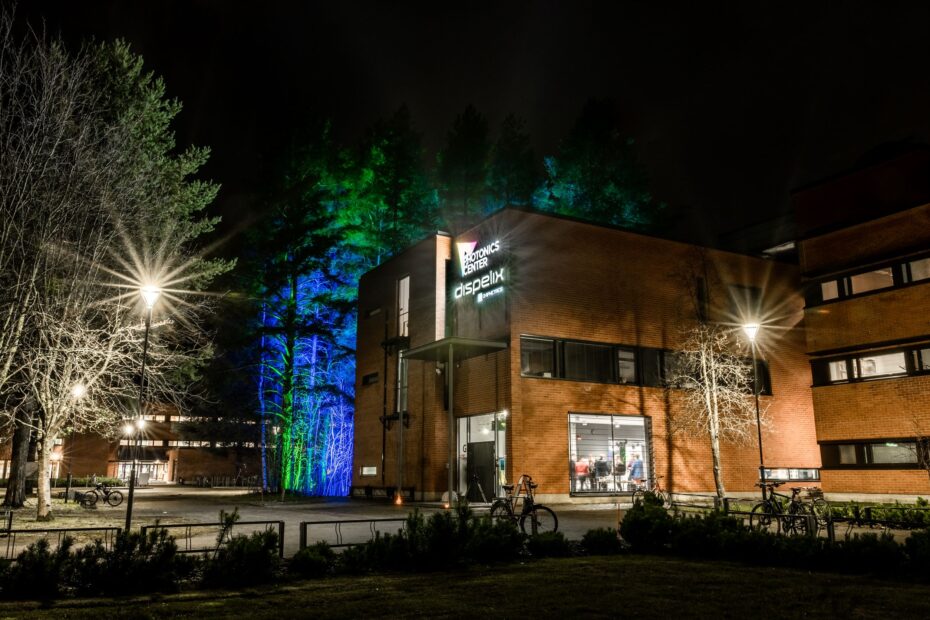Forest and Photonics event took place in the new Photonics Center in the very core of the University of Eastern Finland’s Joensuu campus. The aim was to build and strengthen bridges between the scientists, industry and other forest professionals and discuss current topics in the field.
Increasing the level of automatization in forest operations -where are we?
Autonomous tractors have been in the market for years and the technology is slowly trickling down to forestry. Cameras and LiDARs are already assisting harvester drivers in the cutting edge forest machines, but more developed assistance systems are still at the developing level in companies and research. It is well known that the forest environment is one of the most challenging work environments for automatization due to complexity. For example the topography and the vegetation together create an environment that is changing all the time and thus, difficult to observe in real-time using the sensors and computational methods currently available.
There were also discussions on safety in autonomous work. Industry is also facing challenges related to use of artificial intelligence in this context. For example, companies may need to teach all neural networks they use with the data collected in house to secure the quality. One issue driving the automatization is lack of competent forest machine drivers, which seems to be an issue in many countries. However, it is good to keep in mind that a “good” driver means different things in different operating environments. In the global context, all forest machine drivers in Finland are well educated.
Sensors used in state-of-the-art forest machines are capable of collecting more and more data. From that perspective, individual tree level tracking is an interesting topic in forestry-linked forest research. Although the technology is starting to mature, there are still challenges when it is applied in operational use. In F&P event, the needs and challenges raised were business models and proving the profitability of precise forest information, as well as the data ownership issues.
Forest health and resilience of the forests – hot topics for mitigating climate change
Global challenges such as loss of biodiversity and climate changing are setting context for many of the on-going research activities. Kim Calders presented his work and in the field in his keynote Digital twins for understanding forest disturbances and recovery from space.
Terrestrial laser scanning can capture forest structure but also changes in the structure. Calders is trying to bridge the gap between detailed in-situ measurements and earth observations to pave the way for improved understanding of the forest ecosystems. On the more adventurous novel approaches theme, he also presented the nature as data ghost trees project.
There is lots of interest towards increased use of hyperspectral imaging in research and industry. The applications of hyperspectral imaging are used, especially for phenotyping, i.e mapping or assessing the plants expressed traits. Hyperspectral imagery may also reveal also the vegetation’s responses to stress. The theoretic base in this is in the unique light spectrum of compounds in stressed and non-stressed trees, for example.
Insight and thoughts
Cross-cutting theme in the background, and issue that was raised in many occasions in the event was that the concept of a map is not very dynamic. As many speakers brought up, map, although good in visualising a natural state in a specific moment, is not good for understanding phenomena taking place in time. For example, to understand forest growth, it is good to remember that a tree can grow centuries while having variation in growth at diurnal and annual scales.
There is an active debate in society on declined forest growth expectations and urgent need to improve the state of habitats. These topics did not receive much attention in the talks, although the topics were discussed in many coffee tables. When the current policies are challenged there is a need for research that is close to decision makers, companies and society. EU’s restoration act can help us to take a step toward biosociety together.
In the Photonics4Forestry workshop, the importance of getting to the core of the problem, and understanding it before focusing too much on the solution was emphasized. This was a needed reminder, especially after an event where we easily get excited about new technology and the opportunities it brings. However, to truly advance in solving a challenge, often it could be wise to take some steps back and think about the real problem behind – does the proposed technology address it? To gain an understanding on the fundamentals, the cooperation of researchers and RDI professionals is more than important.
Text: Mikko Vastaranta, Heli Honkanen
Photo: Business Joensuu
